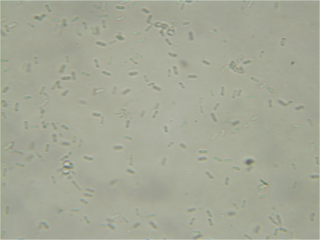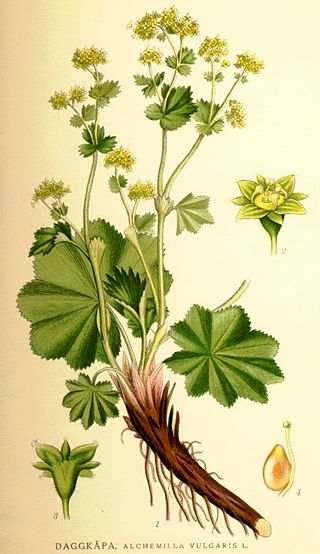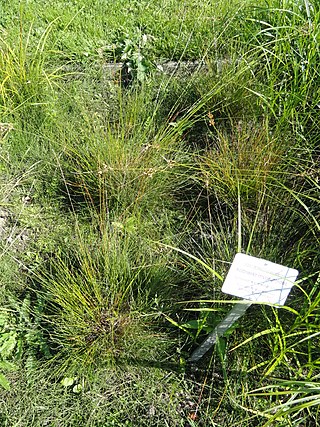Paul Émile de Puydt, a writer whose contributions included work in botany and economics, was born and died in Mons, Belgium. His father was Jean Ambroise de Puydt (1758–1836), who was governor of the province Hainaut in the early days of Belgium from 1830 till 1834. In the first marriage of his father there were 6 children. The famous Remi de Puydt came from this first marriage. He is a half brother of Paul Émile de Puydt. Remi de Puydt was a civil engineer and a politician (representative), and he served in the Belgian army as a colonel.

Capsella bursa-pastoris, known as shepherd's purse because of its triangular flat fruits, which are purse-like, is a small annual and ruderal flowering plant in the mustard family (Brassicaceae). It is native to eastern Europe and Asia minor, but is naturalized and considered a common weed in many parts of the world, especially in colder climates, including British Isles, where it is regarded as an archaeophyte, North America and China, but also in the Mediterranean and North Africa. C. bursa-pastoris is the second-most prolific wild plant in the world, and is common on cultivated ground and waysides and meadows.

Baron Michel Edmond de Selys Longchamps was a Belgian Liberal Party politician and scientist. Selys Longchamps has been regarded as the founding figure of odonatology, the study of the dragonflies and damselflies. His wealth and influence enabled him to amass one of the finest collections of neuropteroid insects and to describe many species from around the world. His collection is housed in the Royal Belgian Institute of Natural Sciences.

Alchemilla alpina, commonly known as alpine lady's-mantle, is an arctic-montane herbaceous perennial plant native to Europe and Southern Greenland.

Armeria maritima, the thrift, sea thrift or sea pink, is a species of flowering plant in the family Plumbaginaceae. It is a compact evergreen perennial which grows in low clumps and sends up long stems that support globes of bright pink flowers. In some cases purple, white or red flowers also occur. It is a popular garden flower and has been distributed worldwide as a garden and cut flower. It does well in gardens designed as xeriscapes or rock gardens. The Latin specific epithet maritima means pertaining to the sea or coastal.

Phoma is a genus of common coelomycetous soil fungi. It contains many plant pathogenic species.
Alfred Wesmael was a Belgian professor of botany. His outstanding work in taxonomy saw him invited to become Visiting Professor at the University of Washington.

Campanula uniflora, known commonly as arctic bellflower and arctic harebell, is a short and slender rhizomatous perennial in the bellflower family Campanulaceae. It is distributed in arctic North America, including the Rocky Mountains and Greenland, in the Asian part of Beringia and in Iceland, Svalbard, the Scandes Mountains and Novaja Zemlja.
Émile Auguste Joseph De Wildeman was a Belgian botanist and phycologist. He is known for his investigations of Congolese flora.

Arabidopsis lyrata is a species of flowering plant in the family Brassicaceae, closely related to the model organism Arabidopsis thaliana.

Alchemilla vulgaris, common name Lady's mantle, is an herbaceous perennial plant in Europe and Greenland. These perennial wildflowers, members of the rose family, are sometimes grown in gardens - mainly for their leaves, which collect sparkling water droplets.
The Royal Academy of Science, Letters and Fine Arts of Belgium is the independent learned society of science and arts of the French Community of Belgium. One of Belgium's numerous academies, it is the French-speaking counterpart of the Royal Flemish Academy of Belgium for Science and the Arts. In 2001 both academies founded a joint association for the purpose of promoting science and arts on an international level: The Royal Academies for Science and the Arts of Belgium (RASAB). All three institutions are located in the same building, the Academy Palace in Brussels.
The following lists events that happened during 1884 in the Kingdom of Belgium.
Cladosporium herbarum is a common fungus found worldwide in organic and inorganic matter. It is efficiently distributed in the air, where it exists as the most frequently occurring fungal species. It can grow over a wide range of temperatures including very cold environments, giving it the ability to grow on refrigerated meat and form "black spots". Its high prevalence in the air and production of allergens makes C. herbarum an important exacerbant of asthma and hay fever.
Events in the year 1841 in Belgium.
Events in the year 1844 in Belgium.
Events in the year 1845 in Belgium.
Events in the year 1857 in Belgium.
Phoma wilt is a disease of the common hop plant caused by several species of fungal plant pathogens in the genus Phoma. These include Phoma herbarum and Phoma exigua, and possibly other as yet unidentified species. Phoma infection may cause decreased yields, but Phoma wilt is not considered to be a very common or destructive disease of the hop plant.

Carex myosuroides, the mouse-tail bog sedge, is a species of sedge with a circumboreal distribution. It is the only known sedge to have ectomycorrhizal associations.








